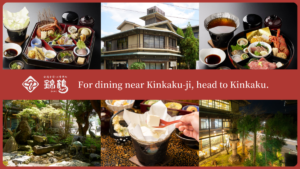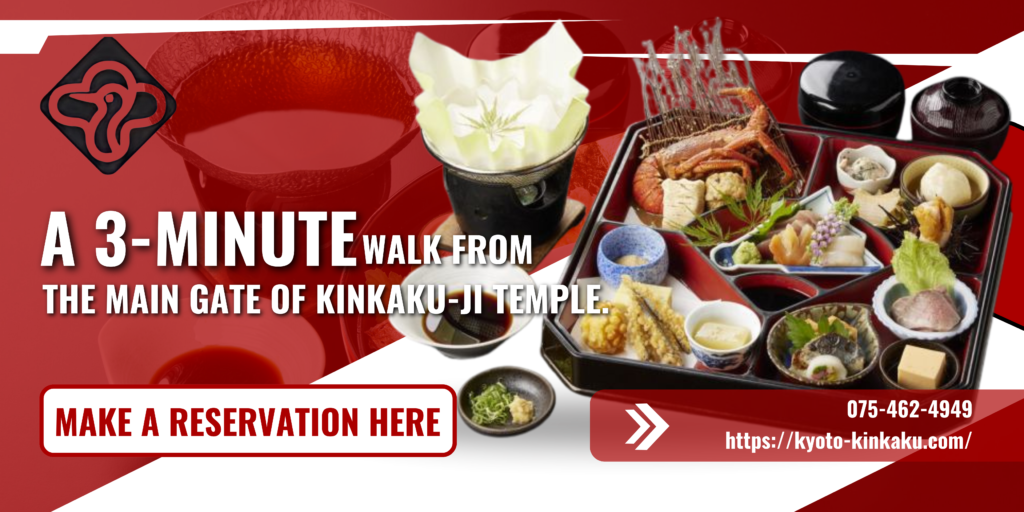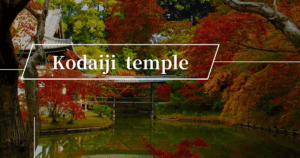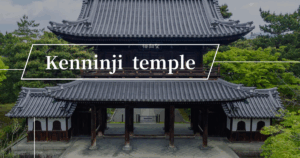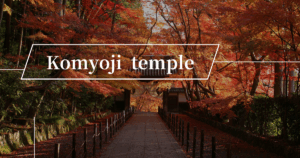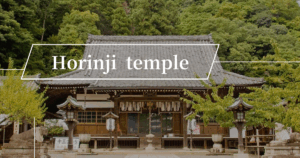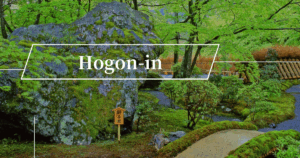Kyoto is loved by many people as a city full of history and culture.
Among them, Kinkakuji Temple is particularly famous and is a place that is always visited by many people.
However, there is another fascinating temple hidden away around Kinkakuji: Shokokuji.
Shokoku-ji Temple is known as the head temple of the Shokoku-ji school of the Rinzai sect of Buddhism, and is a place where you can vividly feel the history of the Muromachi period.
Like Kinkakuji, Shokokuji is one of Kyoto’s most famous temples, but since it receives few visitors, it has a quiet atmosphere.
In this article, we will look at the history and highlights of Shokoku-ji Temple.
What kind of place is Shokokuji Temple?
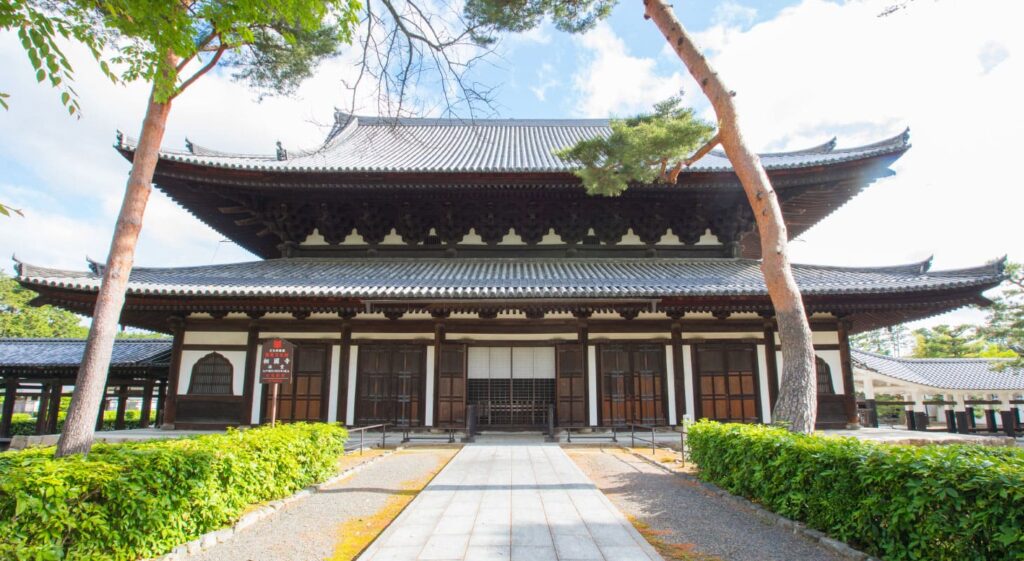
Shokoku-ji Temple is the head temple of the Rinzai sect of Buddhism, located in Kamigyo Ward, Kyoto City, and its official name is Mannenzan Shokoku Joten Zenji Temple.
Construction began in 1382 at the request of Ashikaga Yoshimitsu, the third shogun of the Muromachi shogunate, with Muso Soseki as the nominal founder .
Shokoku-ji Temple is known as one of the Five Mountains of Kyoto and has experienced many historical events.
In particular, it was destroyed during the Onin War and the Tenmei Fire, and has had to be rebuilt many times.
The gardens are attractive, and although simple, they are designed to evoke the spirit of Zen. The garden behind the hojo is particularly beautiful, with its green maples and young pine needles.
Shokokuji Temple is visited by many people as a place to feel history and culture while also finding peace of mind.
The History of Shokokuji Temple
Shokoku-ji Temple is an important temple in Japanese Buddhism that dates back to ancient times, and is a place where history and culture come together.
It has deep ties with the samurai society of the Kamakura period and is home to many legends, and developed as the guardian temple of the region.
The story of Shokoku-ji Temple is an important chapter in the history of Japan.
Here we will take a closer look at its historical background, architectural beauty, and the role it plays in modern times.
Founding and early history
Shokoku-ji Temple was founded with the introduction of Buddhism to the area in ancient times, and initially took root in the local area as a place of ascetic training.
Its origins are recorded in legends and documents, and it is said to have originated in the time of Prince Shotoku and the idea of syncretism between Shinto and Buddhism.
From the time of their early construction, temples contributed to the local community as spiritual centers and developed into bases for the monks to spread their teachings.
This historical background is also the basis for the great influence that Shokoku-ji Temple had on the later development of Japanese Buddhist culture.
Development of the Middle Ages and Support from the Samurai
In the Middle Ages, Shokoku-ji Temple developed further through its deep ties with samurai society.
From the Kamakura period onwards, samurai, seeking spiritual stability and loyalty amidst the turmoil of war, provided considerable support to Shokoku-ji Temple.
The temple was rebuilt through donations and contributions, and as cultural assets and books were accumulated, it also came to serve as a center of learning and the arts.
Under the patronage of the samurai, Shokoku-ji Temple developed its own unique traditions, contributed to the preservation of local culture, and solidified its historical significance.
War and the path to recovery
During times of war that shook Japan, Shokoku-ji Temple experienced repeated destruction and reconstruction.
Damage caused by war once threatened the survival of the temple, but thanks to the efforts of the monks and local residents, it was rebuilt.
During the postwar reconstruction period, efforts were made to restore lost cultural assets and revive traditional events, and the shrine once again regained its role as a symbol of people’s faith and culture.
In this way, Shokoku-ji Temple has maintained its faith and traditions unchanged throughout its harsh history, and even today it remains a presence that inspires many people to feel the weight of its history.
What to see at Shokoku-ji Temple
Shokoku-ji Temple is a place with a main hall that exudes a sense of history, a solemn garden, and many precious cultural assets.
The traditions and aesthetic sense engraved in every corner of the building deeply impress all who visit, and fully convey the temple’s inherent charm.
- The majestic main hall and beautiful Architectural
- A Japanese garden where you can experience the charm of each season
- Valuable cultural assets and traditional artworks
The majestic main hall and beautiful Architectural

The main hall of Shokoku-ji Temple is characterized by its heavy wooden construction, with intricate carvings and decorations down to the smallest details.
Despite being rebuilt many times, it has retained the dignity of its original construction and continues to welcome many worshippers as a precious witness to history.
The intricate patterns engraved on the ceiling beams, pillars and doors demonstrate the timeless sophistication of the craftsmanship and evoke the traditional beauty of Japanese architecture.
Inside, cultural assets such as Buddhist statues, folding screens, and hanging scrolls that have stood the test of time are quietly displayed, conveying their historical background and spirituality to visitors.
The traces of history and craftsmanship in the details will give you a real sense of the deep historical value of the architectural beauty of Shokoku-ji Temple.
A Japanese garden where you can experience the charm of each season
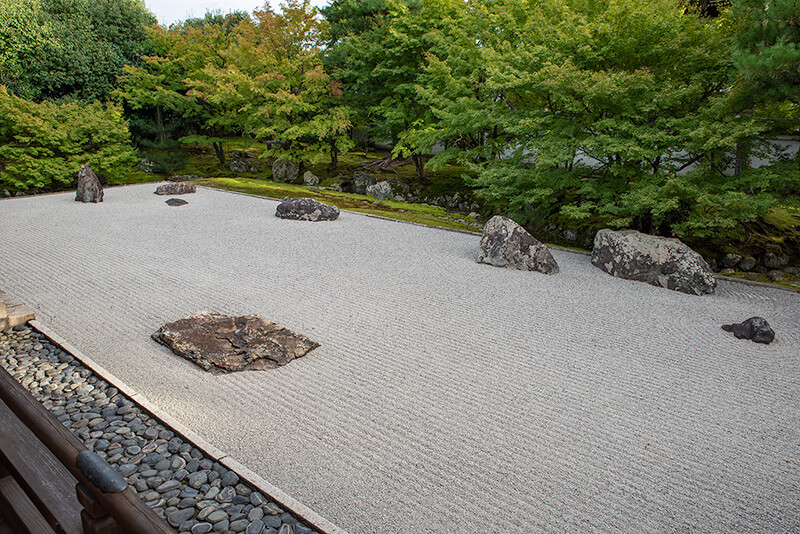
The garden of Shokokuji Temple is a space that embodies the best of Japanese gardens, skillfully incorporating the natural beauty of the four seasons.
The stonework, pond, and arranged greenery are in harmony with each other, allowing you to enjoy a variety of different scenes, such as cherry blossoms in spring, fresh greenery in summer, autumn leaves, and snowy scenery in winter.
The walking paths within the garden exude a tranquil atmosphere that reflects the ancient spirit of Zen, providing peace of mind to visitors.
The placement of the garden stones, moss, and plants is in keeping with feng shui and garden aesthetics, and there are signs that the monks of the past maintained the garden to calm their minds .
This garden, where natural and artificial beauty blend together, is more than just decorative; it delights the eyes of visitors as a place that symbolizes spiritual culture.
Valuable cultural assets and traditional artworks
Shokokuji Temple houses numerous cultural assets and traditional artworks that have been passed down through the ages, including national treasure-class Buddhist statues, picture scrolls, and ancient documents.
These cultural assets are the crystallization of the faith and art that the temple has accumulated over its long history, and are valuable documents that demonstrate the aesthetic sense and technological developments of each era.
In the exhibition room, you can see intricately painted Buddhist statues and skillfully painted hanging scrolls, and along with expert commentary, you can learn more about their background and state of preservation .
In addition, regular preservation and restoration work is carried out, and the building is highly regarded as an important cultural heritage that should be passed on to future generations.
Visitors will be able to experience the world of history and beauty that unfolds before their eyes and feel the weight of the traditional culture that Shokokuji Temple is carrying on.
What is the best season to visit Shokoku-ji Temple?
Shokoku-ji Temple is a tourist destination that has different charms depending on the season, and is especially recommended during the special viewing periods in spring and autumn.
The special spring viewing period runs from mid-March to early June .
This period coincides with cherry blossom season, making the gardens of Shokokuji Temple beautiful.
You can also visit the lecture hall and admire the famous ceiling painting known as the “Crying Dragon.”
The special autumn viewing period runs from late September to early December .
The autumn foliage is beautiful and the gardens of Shokoku-ji Temple are particularly spectacular, especially the back garden of the Hojo, where the green maples and young pine needles stand out in all their beauty.
In addition, the Kannon repentance ceremony is held in June, and the founder’s memorial service is held in October.
Access to Shokokuji Temple
The easiest way to get to Shokokuji Temple is by public transportation.
Shokoku-ji Temple is located in Kamigyo Ward, Kyoto City, and can be reached by subway or city bus.
Below we will introduce how to access the temple from Kyoto Station and Kinkakuji Temple.
Access from Kyoto Station
The most convenient way to get to Shokoku-ji Temple from Kyoto Station is by subway.
Take the subway Karasuma Line from Kyoto Station and get off at Imadegawa Station. After getting off, it is about an 8-minute walk to reach Shokokuji Temple.
You can also take the city bus and get off at the Karasuma Imadegawa or Doshisha-mae bus stops and walk to the venue.
Access from Kinkakuji Temple
The most convenient way to get from Kinkakuji to Shokokuji is by bus.
Take a city bus from Kinkakuji Temple and get off at the “Karasuma Imadegawa” bus stop. From there, it is about a 6-minute walk to Shokokuji Temple.
If you take the subway, you can transfer to the Karasuma Line at the nearest bus stop from Kinkakuji Temple, get off at Imadegawa Station, and walk to Shokokuji Temple.
Basic information about Shokokuji Temple
Below is a table summarizing basic information about Shokoku-ji Temple.
| content | |
|---|---|
| location | 701 Shokokujimonzencho, Imadegawa-dori Karasuma Higashiiru, Kamigyo-ku, Kyoto |
| Visiting hours | 10:00-16:30 (last entry 16:00) |
| Admission fee | Adults: 1,000 yen; Junior and senior high school students: 500 yen; Preschoolers: Free (different fees apply during special viewing periods) |
| parking | There is no dedicated parking lot within the temple grounds (please use paid parking lots nearby) |
| access | Get off at the subway “Imadegawa” station, then walk for about 8 minutes. Get off at the city bus “Doshisha-mae” stop, then walk for about 5 minutes. |
| Estimated travel time | 1-2 hours |
Recommended spots around Shokokuji Temple
There are many historic temples and shrines around Shokoku-ji Temple.
Below, we will introduce three recommended spots.
Ci Zhao Yuan
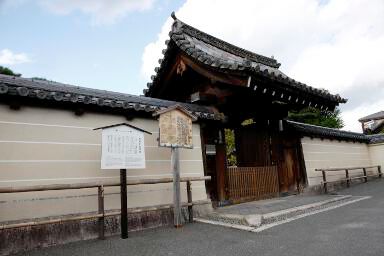
Jishoin is one of the sub-temples of Shokoku-ji Temple and is home to a paper ink painting of Bodhidharma and an ash-glazed four-legged vase, both of which are nationally designated Important Cultural Properties.
It is especially known as Ashikaga Yoshimasa’s incense and flower store, and has great historical value.
The nearest station is Kuramaguchi Station on the Karasuma Subway Line, about a 5-minute walk away.
Jishoin Temple has a deep connection to the history of Shokoku-ji Temple, and here you can feel the history and culture of Kyoto.
In particular, the exhibition of important cultural properties is recommended for art lovers.
Jion-in
Jion-in Temple is one of the sub-temples of Shokoku-ji Temple and is associated with Zen master Daiten, the teacher of Ito Jakuchu.
The temple is particularly famous for its dry landscape garden, which will be open to the public for a special viewing during the 2024 “Winter Tour of Kyoto.” The garden can be viewed from the main hall, which was relocated from the residence of the Nijo family, an aristocrat, and visitors can enjoy the beautiful scenery.
The garden at Jiun-in Temple is beautifully designed to evoke the spirit of Zen, and is popular as a place to calm the mind.
Here you can get a deeper feel for Kyoto’s history and culture.
Fukoin Temple
Fukoin is one of the sub-temples of Shokoku-ji Temple and is characterized by its historic buildings and beautiful gardens.
Like the other sub-temples of Shokoku-ji, this is a place where you can feel the history and culture of Kyoto.
Fukoin Temple is located within walking distance of Shokoku-ji Temple, so visitors can visit both temples at the same time.
Fukoin Temple is known for its tranquil atmosphere and is loved by many people as a place to calm the mind.
Here you can spend a relaxing time while deeply immersed in the history and culture of Kyoto.
Frequently asked questions about Shokokuji Temple
summary
Shokoku-ji Temple is the head temple of the Rinzai sect of Buddhism, located in Kamigyo Ward, Kyoto City. It was built at the request of Ashikaga Yoshimitsu, the third shogun of the Muromachi shogunate, with Muso Soseki as its nominal founder.
It is rich in beautiful gardens and cultural assets, and at the Jotenkaku Museum you can see the sliding door paintings by Ito Jakuchu, while the Kaisan-do Hall is known as a prefectural designated tangible cultural property.
When you visit Kyoto, be sure to spend some time relaxing and immersing yourself in the history and culture of Shokoku-ji Temple.
Shokokuji Temple is a place where you can get a deep sense of Kyoto’s history and culture.
